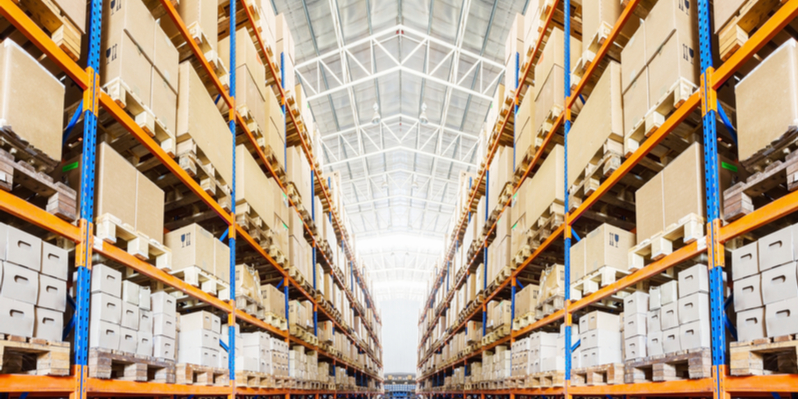Climate in a warehouse is incredibly important, and that includes humidity levels. Ideally, humidity levels in a warehouse should be between 40% and 50% relative humidity (RH). There are many drawbacks to allowing humidity levels to get too high in a warehouse – and some can end up costing you a lot of money while slowing down productivity.
Why is It So Important to Control Warehouse Humidity?
If humidity levels are too high in a warehouse it will increase the likelihood of mold growth, corrosion and rust. Condensation will build up on surfaces – from the ceiling to the walls and floors. This creates ideal conditions for pests and rodents to thrive. In addition, you may face higher insurance costs related to mold and mildew claims. It can also impact the products you store in your warehouse, even if they are kept in boxes or packaging.
Buildings with high humidity levels are much less comfortable environments to work in, which can lead to unhappy employees and lower productivity.
Bacteria growth is a big cause for concern in stagnant areas with excess humidity. Because humidity makes surfaces damp, bacteria and viruses have ample opportunity to thrive – after all, moisture is a key component to bacteria growth.
It is common to assume that you will be able to see mold growth, but this isn’t always the case. Mold can easily go undetected, allowing spores to germinate, reproduce and spread through the air. As a result, mold can contaminate anything from products in your warehouse to the employee coffee pot. This could cause employees to get sick, further reducing productivity and morale.
The best thing you can do to reduce these sorts of issues is to decrease humidity levels.
Monitoring Humidity Around the Clock
Even if humidity levels are around thirty percent during the day, they can reach up to 70 or 80 percent at night. That’s why it’s important to monitor humidity levels in warehouses around the clock, not just when employees are at work.
The Link Between Temperature & Humidity
Relative humidity (RH) and temperature are closely related, although it’s common for industries to pay close attention to one and ignore the other. It’s equally important to regulate both. As the temperature in a warehouse increases, the relative humidity will decrease, and the same is true in reverse. Keep in mind, relative humidity doesn’t accurately depict how much water vapor is in the air, instead it tells you how close the air is to being saturated. This is why it’s so important to monitor both temperature and humidity levels at all times.
How to Lower Humidity Levels in Your Warehouse
There are a couple different things you can do to lower humidity levels in your warehouse. For starters, having adequate spot coolers can do a lot to reduce temperatures and maintain humidity levels. Learn more about renting water- or air-cooled spot coolers in South Florida.
Installing large high volume, low speed fans can also help reduce humidity levels, while also lowering moisture and bacteria present in the air. Using HVLS fans can make the temperature feel 8 to 9 degrees cooler, although fans alone cannot actually lower the temperature like a portable spot cooler can. Instead, fans work by routinely redistributing the air and therefore preventing the air from becoming saturated with moisture. A large HVLS fan circulates at a low speed, thus creating a much larger column of air than a traditional fan.
Benefits of Reducing Humidity Levels in Warehouses:
- Improve air quality
- Reduce moisture in the air
- Cut down on the risk of harmful bacteria colonies
- Improve employee morale and productivity
We can help! Contact us today to learn more

